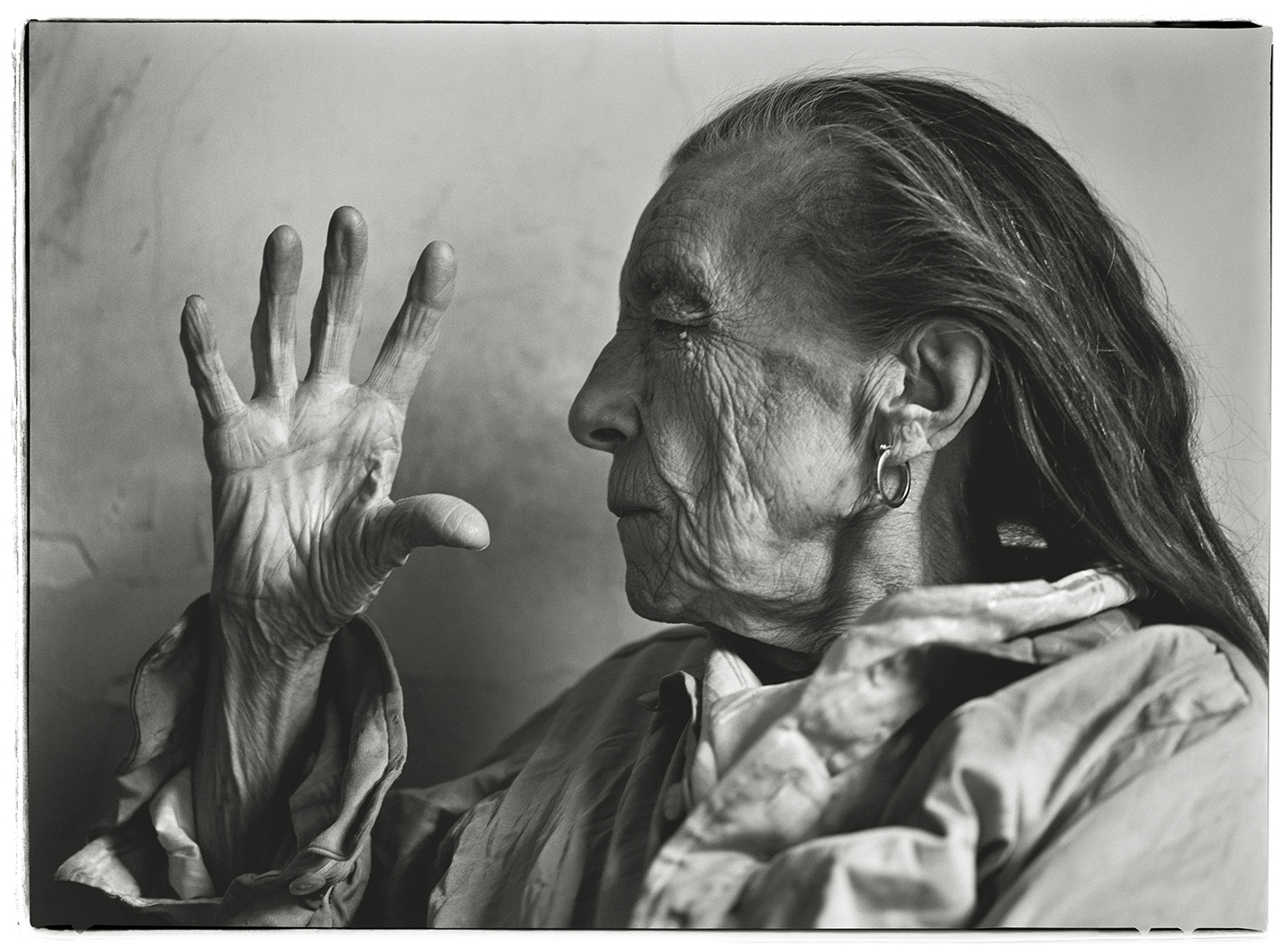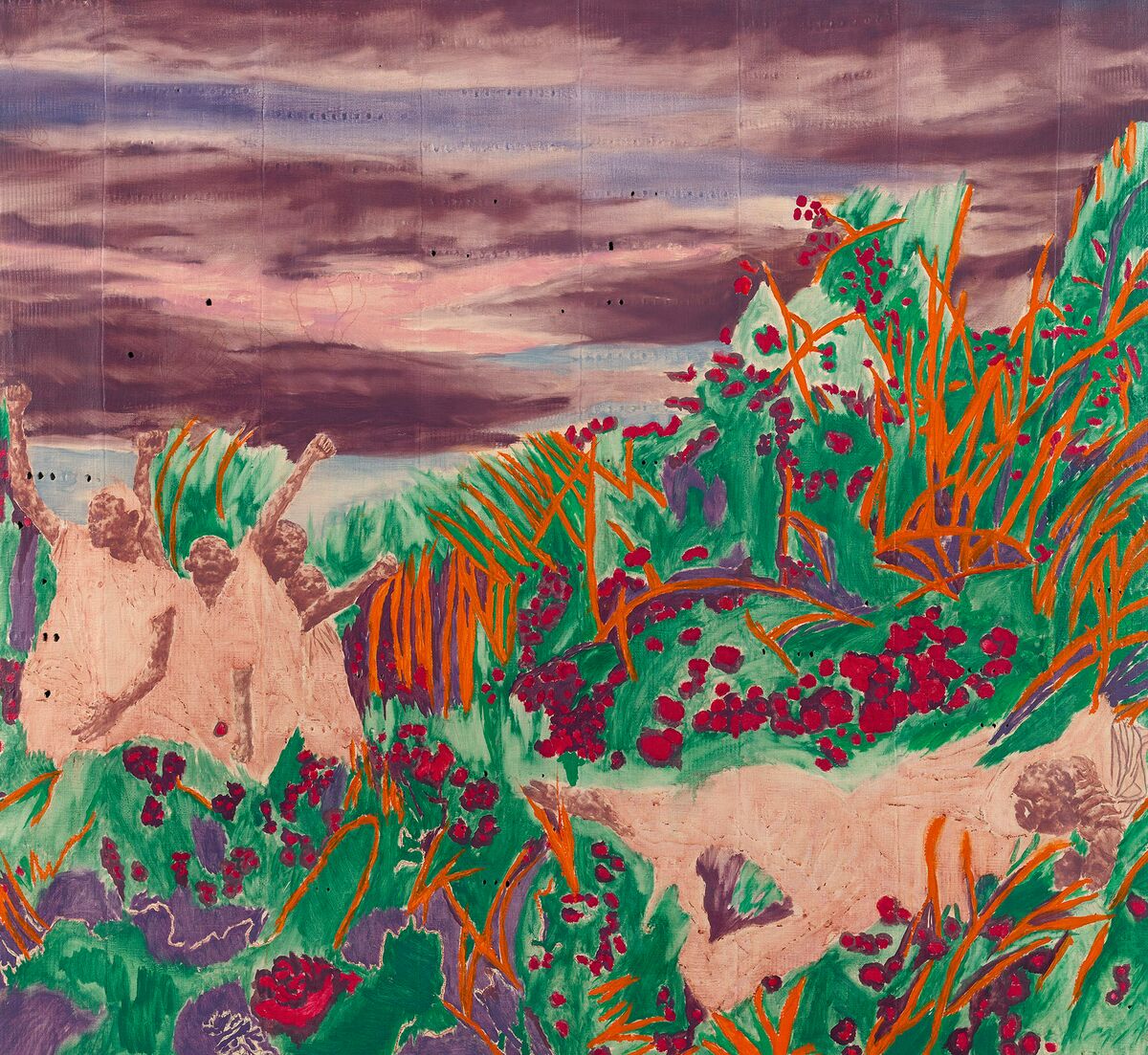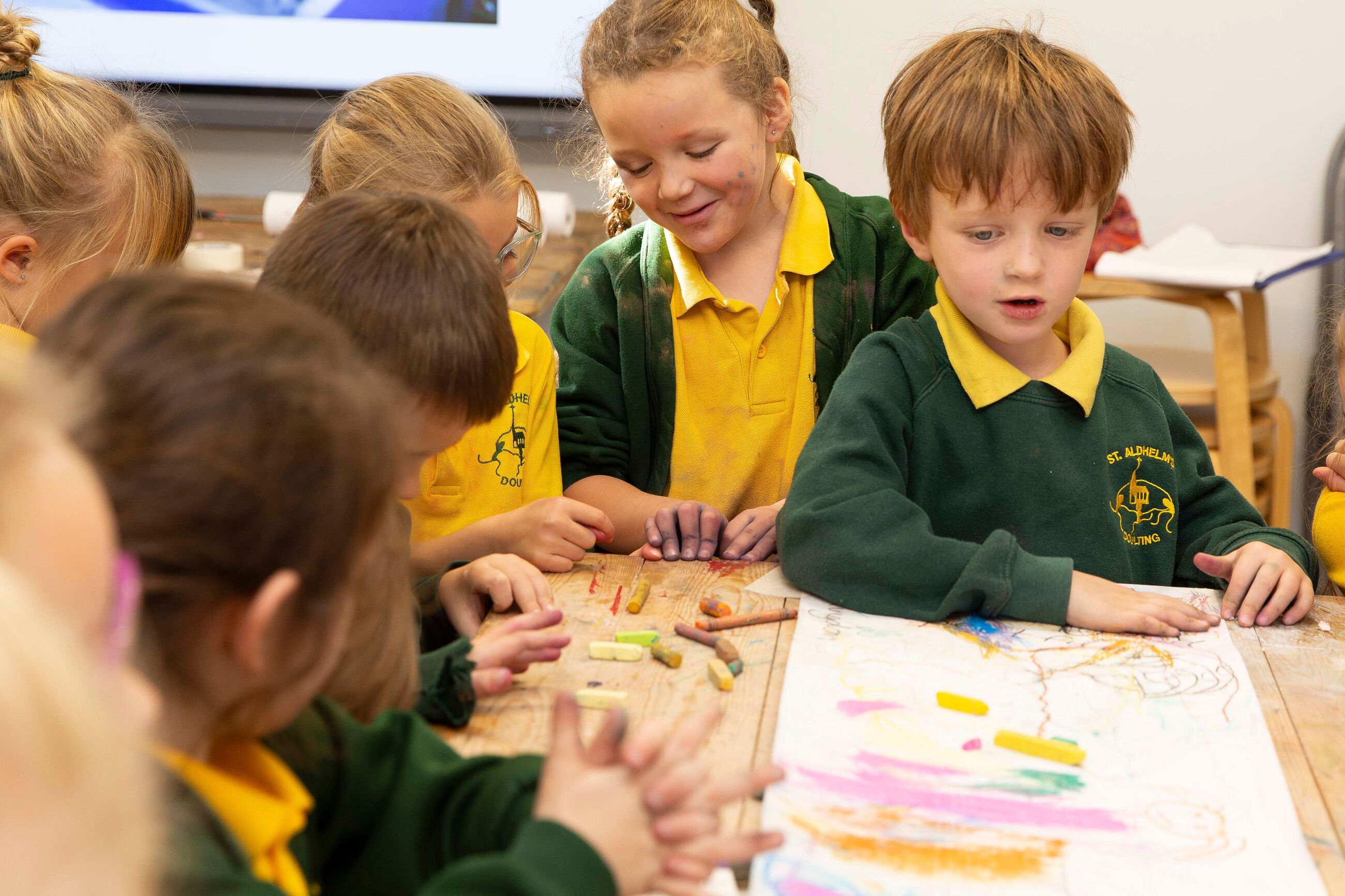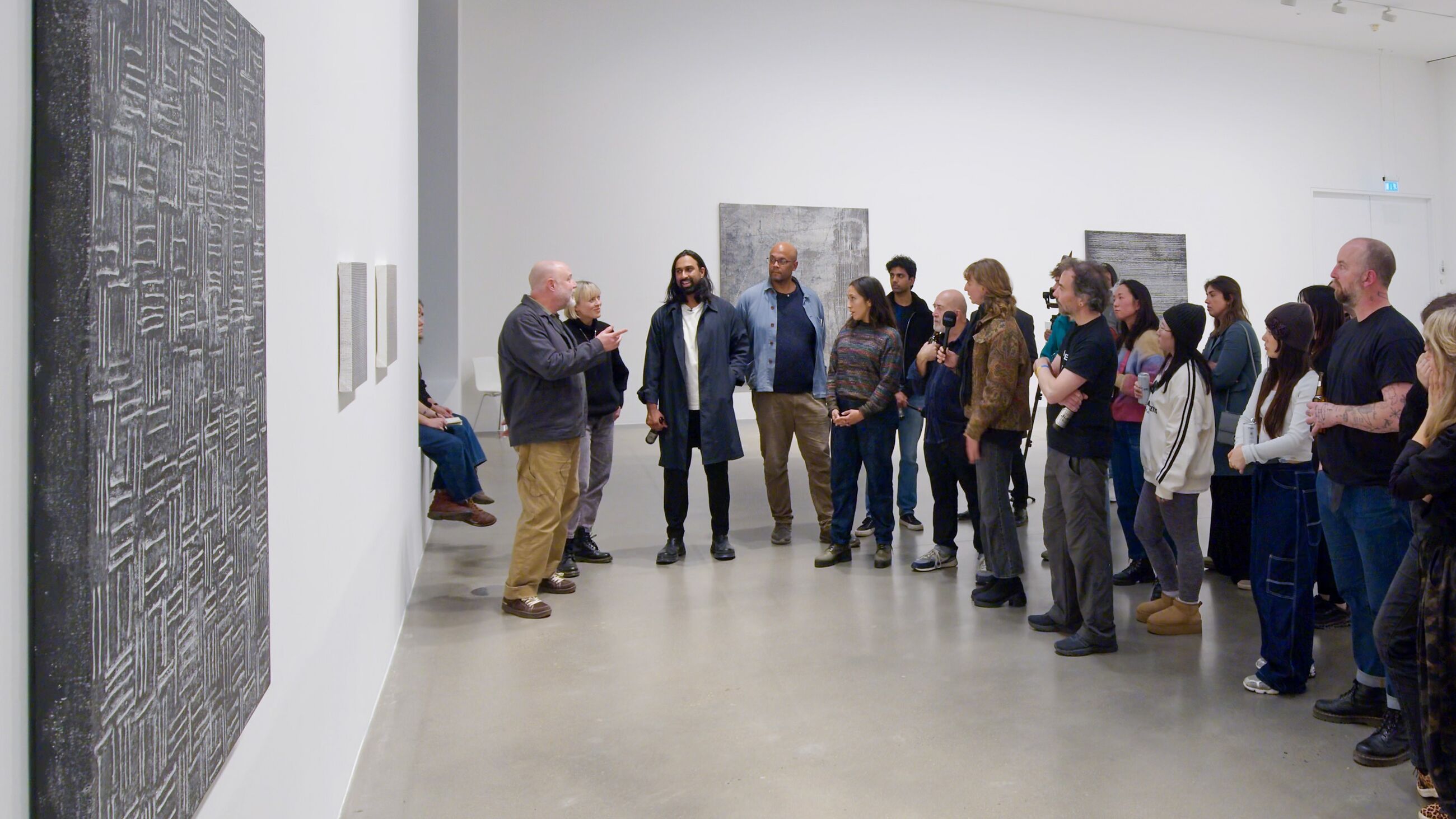Exhibition Learning Notes: ‘Annie Leibovitz. Stream of Consciousness’

Annie Leibovitz, New York City, 2017 © Annie Leibovitz. Photo: Annie Leibovitz
Exhibition Learning Notes: ‘Annie Leibovitz. Stream of Consciousness’
This resource has been produced to accompany the exhibition ‘Annie Leibovitz. Stream of Consciousness’ at Hauser & Wirth New York, 22nd Street from 2 November 2024 – 11 January 2025.
Click here to download a PDF version of this resource.
About Annie Leibovitz
Annie Leibovitz is an internationally acclaimed photographer known for her inventive approach to capturing images. Her vision, which combines portraiture with photojournalism that harnessed historical and cultural touchstones throughout the United States and abroad, has resulted in some of the most well-known photographs of our time.
Born in Connecticut in 1949, Leibovitz later became a student at the San Francisco Art Institute. After her freshman year there, Leibovitz bought her first camera and eventually switched majors from painting to photography. In 1970, while Leibovitz was still a student, she approached Rolling Stone magazine with a few of her pictures. From here, some of her images were published and her career as a photojournalist began. Leibovitz later became Rolling Stone’s chief photographer in 1973, a position which she held for a decade. During this time and over the course of the following years, Leibovitz has developed a unique photographic language that has made her one of the leading voices in contemporary American portraiture throughout the 20th and 21st centuries.
Leibovitz is the recipient of many honors. In 2006 she was made a Commandeur in the Ordre des Arts et des Lettres by the French government. The previous year, in a compilation of the forty top magazine covers of the past forty years by the American Society of Magazine Editors (ASME), she held the top two spots (#1 for the photograph of John Lennon and Yoko Ono taken for Rolling Stone the day Lennon was shot, and #2 for the pregnant Demi Moore in Vanity Fair). In 2009, she received the International Center of Photography’s Lifetime Achievement Award, ASME’s first Creative Excellence Award, and the Centenary Medal of the Royal Photographic Society in London. In 2012, she was the recipient of the Los Angeles Museum of Contemporary Art Award to Distinguished Women in the Arts and the Wexner Prize. In 2013 she received the Prince of Asturias Award for Communication and Humanities. She was the inaugural recipient of the San Francisco Museum of Modern Art Contemporary Vision Award in 2015. In 2018, she received a Lifetime Achievement Award for Excellence in the Arts from the National Museum of Women in the Arts. Leibovitz has also been designated a Living Legend by the Library of Congress. In 2024, she was inducted into the Académie des Beaux-Arts as a foreign associate member.

Annie Leibovitz, Agnes Martin, Taos, New Mexico, 1999 © Annie Leibovitz
What does the exhibition look like?
‘Annie Leibovitz: Stream of Consciousness’ presents a group of 67 works which, for the artist, are not tied to the moment the image was taken. Within the exhibition, most of the works were captured within the last 10 – 15 years and viewers gain insight into Leibovitz’ thought processes, specifically how she connects images taken at different periods of time and places in her career. The exhibition includes landscapes, still lifes, portraits of artists, actors, musicians, activists, dancers, writers and more.

Annie Leibovitz, Kara Walker, New York City, 2005 © Annie Leibovitz
What are the major themes within Leibovitz’s work?
Artist Studios and Capturing the Personal
Leibovitz includes many portraits of artists and images of artist studios taken over the years. She embraced personal journalism and has been inspired by a variety of artists and creatives and photographed them in spaces that are meaningful to them. Her work continuously blurs the lines between celebrity and civilian, artist and subject, removing the boundary between herself and individuals in front of the lens. This exhibition displays collaborations with creatives such as Jasper Johns, Kara Walker, Patti Smith, Joan Didion, Amy Sherald, Louise Bourgeois, Cindy Sherman, James Turrell, amongst others.
Time
Leibovitz emphasizes how photographs don’t always need to be tied to the exact moment in time they were captured—that the life of a story within a photo can evolve as time progresses. Within this exhibition, Leibovitz departs from a chronological display of her work, celebrating the multidimensional life of an image without labels or traditional themes attached.
Connectivity
This exhibition gives audiences a look inside the artist’s internal thought processes as Leibovitz displays images that are from different moments in time, yet still connect and overlap with one another in multiple ways. The artist is interested in these points of connection and the nonlinear nature of photography practice, and relating human stories to one another.
One of many examples of stylistic connection is shown through the works ‘Cindy Sherman, East Hampton, New York, 2022’ (2024) and ‘Reykjavik, Iceland, 2017’ (2024). Leibovitz brings the striking white hue of Sherman’s hair together with the stark pale blue and white sheen of the iceberg by placing these images side by side in the exhibition.

Annie Leibovitz, Reykjavik, Iceland, 2017 © Annie Leibovitz

Annie Leibovitz, Robert Smithson’s Spiral Jetty, Rozel Point Great Salt Lake, Utah, 2010 © Annie Leibovitz
What inspired Leibovitz’s work?
As her career progressed, Leibovitz was inspired by collaboration with creatives in front of the lens—the artist captured intimate portraits actors, directors, writers, musicians, athletes, and political figures, including every US president since Richard Nixon’s time in office and every first lady since Jimmy Carter’s time in office, as well as fashion photographs.
Leibovitz was influenced by artists such as Robert Frank and Henri Cartier-Bresson as she focused on personal journalism. Interested in Frank’s highly personal and emotional style of photography with Cartier-Bresson’s Surrealist and even sculptural art photography, these key influences were a part of Leibovitz’s journey in forming a distinct visual language. Throughout the 1970’s, Leibovitz was interested in other genres of photography, fashion included, and was influenced by artists like Helmut Newton, Guy Bourdin and Diane Arbus.

Annie Leibovitz, Louise Bourgeois, New York City, 1997 © Annie Leibovitz
‘…I settled on this brand called ‘portraits’ because it had a lot of leeway. But I don’t think of myself that way now: I think of myself as a conceptual artist using photography.’—Annie Leibovitz, ArtReview, 2019
How does Leibovitz make her work?
Leibovitz developed a portraiture technique early in her career. She fit style to subject through collaborating with her subjects, photographing them in their homes or other intimate locations, where friends, lovers, children, and other personal markers might appear.
Later in her career, Leibovitz began using a medium-format camera that created square photographs which aligned with her shift towards set-up portraits. The planned portraits were based on a straightforward idea, still stemming from a personal, creative collaboration with her subjects. Displaying a high level of intimacy and depth of engagement, this relationship can be seen in one of her most celebrated photographs, in which John Lennon clutches Yoko Ono. The portrait, made on December 8, 1980, is an intimate symbol of the couple’s relationship. This close collaboration is also represented in this exhibition as intimate images of artists in their homes, studios or places of comfort are on display.

Annie Leibovitz, Edward Hopper’s Childhood Home, Nyack, New York, 2023 © Annie Leibovitz
What artists does her work relate to?
Robert Frank (1924 – 2019) was a Swiss American photographer and documentary filmmaker focused on documenting his perspective of American society.
Henri Cartier-Bresson (1908 – 2004) was a French photographer and artist who spearheaded the street-photography genre.
Diane Arbus (1923 – 1971) was an American photographer widely known for her black-and-white portraits.
Hauser & Wirth artists to consider
Roni Horn (b. 1955) is an American artist with a longstanding interest in the protean nature of identity, meaning, and perception, as well as the notion of doubling; issues which continue to propel Horn’s practice.
Amy Sherald (b. 1973) is an American painter. Her work documents contemporary African American experience in the United States through portraiture, inviting viewers to participate in a more complex debate about accepted notions of race and representation, and to situate Black life in American art.
Cindy Sherman (b. 1954) is an American photographer. Her work has interrogated themes around representation and identity in contemporary media for over four decades.

Annie Leibovitz, Cindy Sherman, East Hampton, New York, 2022 © Annie Leibovitz

Annie Leibovitz, Amy Sherald, Columbus, Georgia, 2022 © Annie Leibovitz
Glossary
Fashion Photography
A genre of photography which focuses on the display of garments and other fashion-related accessories.
Nonlinear
Information that is not displayed in a straight line or within a straightforward narrative.
Personal Journalism
A genre of journalism that is centered around the author’s life experiences.
Photojournalism
The art of communicating societal news and events through photographs.
Portraiture
The art of capturing a creative visual which focuses on the details of an individual.
Subject
A person or thing that is being focused on, discussed or described.
Surrealism
A 20th Century art movement that developed in Europe where artists used the unconscious mind and dreamlike scenes to express themselves.

Annie Leibovitz, Billie Eillish, Los Angeles, 2023 © Annie Leibovitz
Discussion questions
Leibovitz’s work is usually displayed chronologically—in this exhibition, the artist returns to and connects photographs from different moments and places in time. What is the significance of placing works made at different moments in the same space? Reflect on your own creative journey/practice—could any works you have created during different periods in your life connect to one another? How?
The exhibition focuses on the artist’s subjects in spaces that are personal—what do you think the significance is when capturing people in spaces that are emotionally meaningful to them?
Annie Leibovitz has delved into different genres of photography and journalism over time—including photojournalism, portraiture, fashion photography and personal journalism. How do you think Leibovitz has used each genre to develop her visual language and tell a story?

Annie Leibovitz, Supreme Court Justice Ketanji Brown Jackson, Washington, D.C., 2022 © Annie Leibovitz
Supplementary research
Resources
1 / 10









